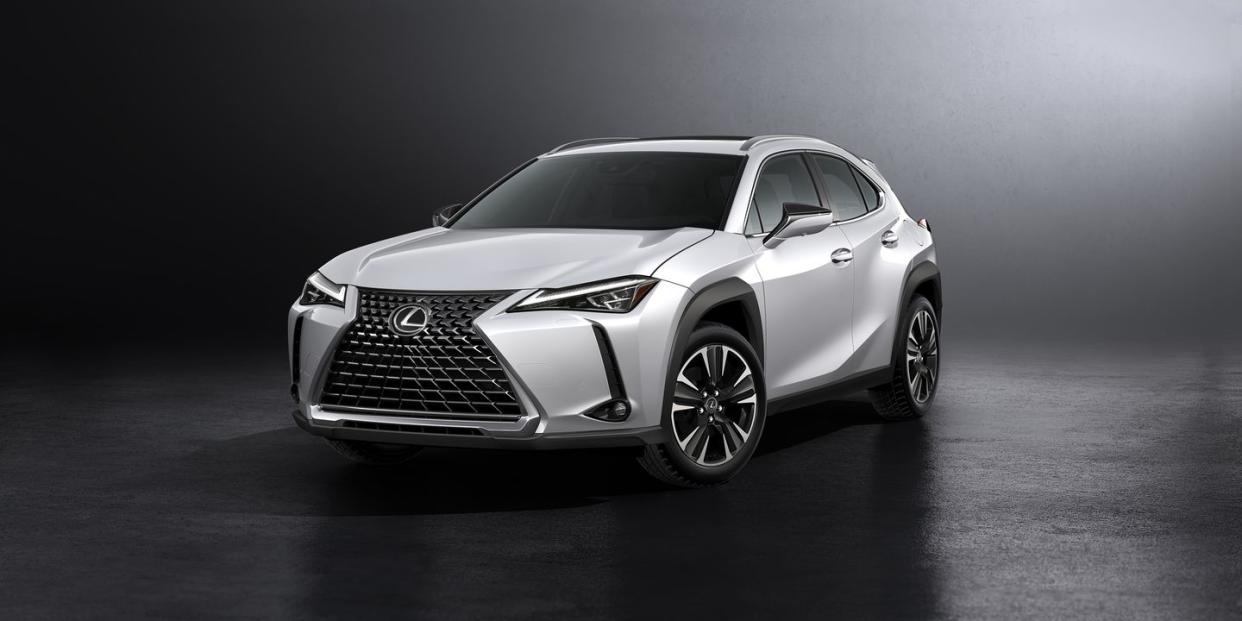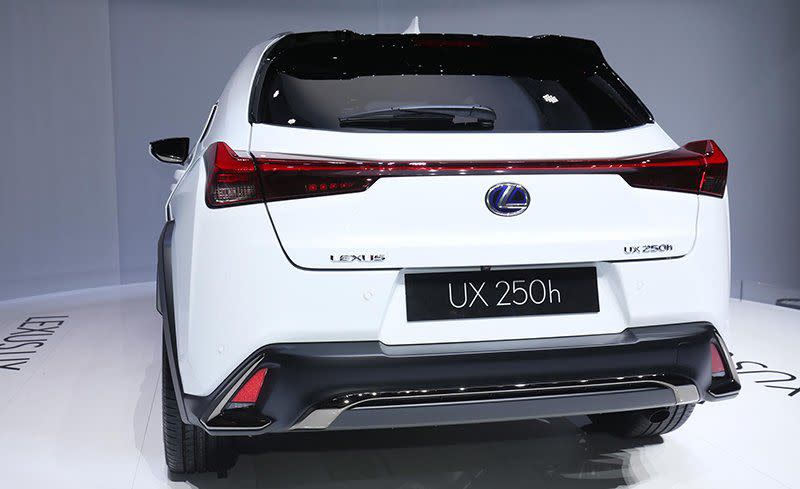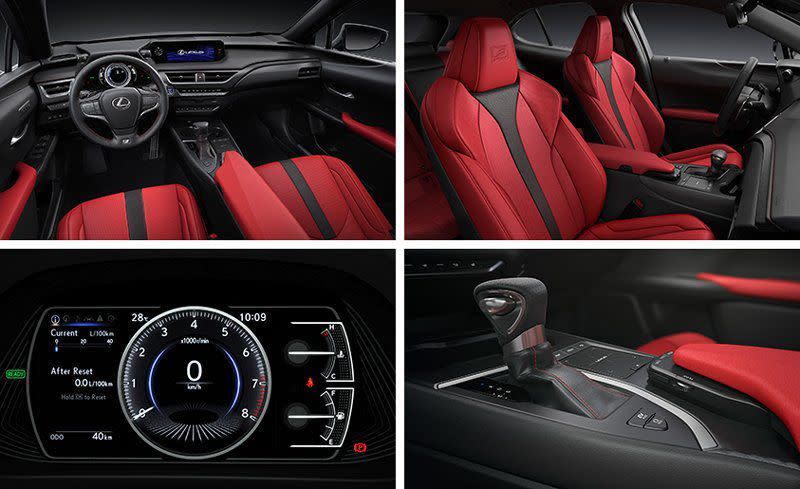2019 Lexus UX: A Tiny Crossover with Outsize Styling

Lexus’s SUV lineup is gaining its fifth member in the form of the 2019 UX, a new subcompact crossover that will slot in slightly below the also subcompact NX in price and size. It may be small, but it has outsize, angular styling that seems to be its key weapon in the fight against the Mercedes-Benz GLA-class and the BMW X1, a battle that will begin when the UX hits dealerships in December.
The UX nameplate was first seen in 2016, when it adorned a radical-looking tiny crossover concept. The looks have been toned down somewhat for production, but the UX still has an in-your-face front end dominated by the familiar Lexus spindle grille and plenty of sharp lines and creases along its body sides. It measures 177.0 inches long and has a 103.9-inch wheelbase-0.8 inch and 5.3 inches tighter than the measurements of the NX, which itself is considerably larger than the GLA, X1, and Audi Q3 despite being similar in price to those German competitors.
Unlike the NX, which has underpinnings related to the Toyota RAV4’s, the UX rides on a version of the Toyota New Global Architecture (TNGA) platform. It has the same wheelbase as the Toyota C-HR, and it uses the same strut front and multilink rear suspension setups as that model (and numerous other Toyota products that employ this architecture).
Powertrains include a 168-hp 2.0-liter inline-four, which in the UX200 is paired with a continuously variable automatic transmission (CVT)-not the most exciting combination when stacked up against the 200-hp-plus 2.0-liter turbo four-cylinders found in the competition. At least Lexus claims its new Direct Shift CVT improves power delivery, and this new engine should make for good EPA fuel-economy numbers.
Interestingly, all-wheel drive will be offered only on the UX250h hybrid model. The gas-electric setup uses a new 2.0-liter four-cylinder combined with two electric motors, one powering the front axle and one driving the rear; total output is 176 horsepower. A new technology called Predictive Efficient Drive is said to analyze factors including driving habits and traffic conditions to optimize the level of charge in the nickel-metal-hydride battery pack and that of the regenerative braking system.
An F Sport version will be available for both the four-cylinder UX200 and the hybrid UX250h; it includes not only the expected visual tweaks to the grille and bumpers but also revised springs and anti-roll bars, 18-inch wheels, and optional adaptive dampers with firmness that can be adjusted via the driving modes.
We’re curious to see the UX’s interior packaging given its diminutive footprint (Lexus has yet to release rear-seat room or cargo-space figures). The dashboard appears to have a simple, horizontally oriented design with a row of physical buttons below a large display screen that’s presumably controlled by the latest version of Lexus’s Remote Touch control interface. Lexus will offer quilted leather upholstery as an option, as well as a new trim pattern inspired by a type of Japanese paper called washi. F Sport models have their own specific front seats, steering wheel, and instrument cluster.
Considering that the NX starts at nearly $37,000 for a front-wheel-drive NX300 and $39,000 for an all-wheel-drive NX300h hybrid, we expect the UX200 to come in around $5000 cheaper, with the hybrid commanding a slight premium and well-equipped versions crossing the $40K mark.
('You Might Also Like',)




